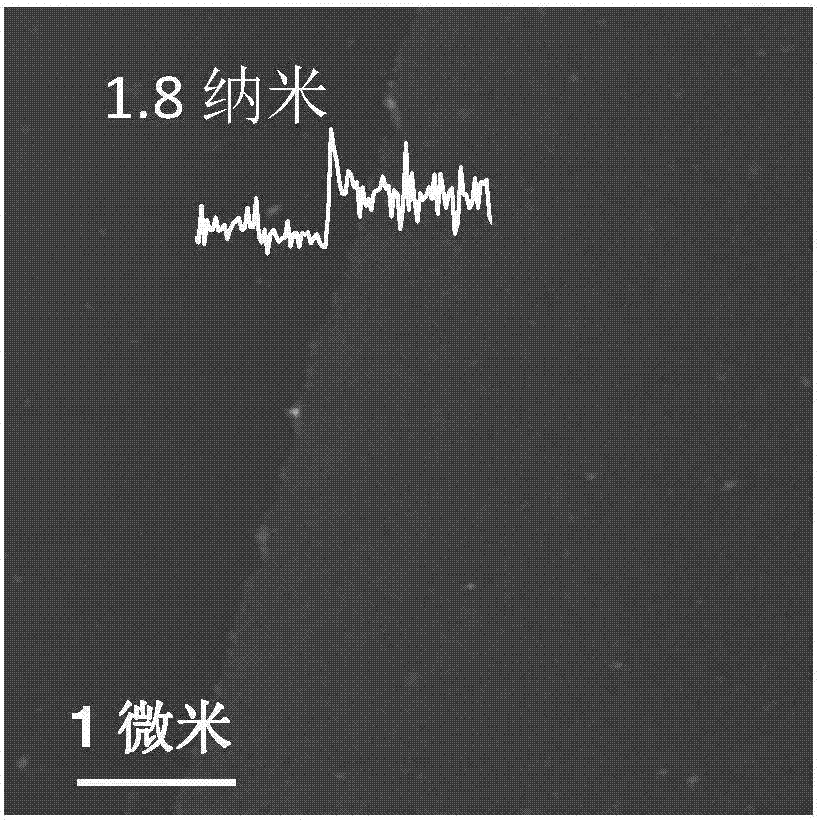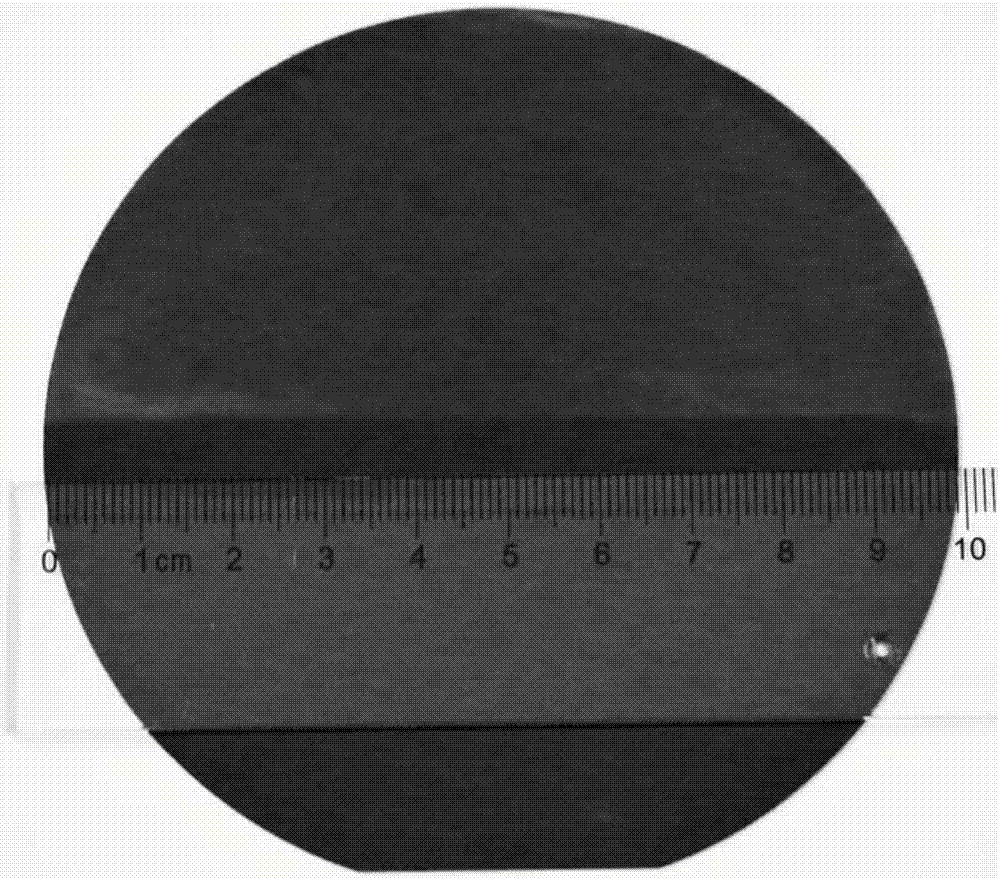Two-dimensional conjugated polymer and preparation method and application thereof
A two-dimensional conjugated polymer technology, applied in the field of large-area ultra-thin two-dimensional conjugated polymer semiconductor materials and its preparation, can solve problems affecting film performance, polymer film wrinkles, limit application and development, etc., to achieve Ease of industrial application, mild reaction conditions, and simple operation
- Summary
- Abstract
- Description
- Claims
- Application Information
AI Technical Summary
Problems solved by technology
Method used
Image
Examples
Embodiment 1
[0047] Preparation of poly 9,9'-biscarbazole (Material I)
[0048] The schematic diagram of the polymerization reaction is as figure 1 As shown, the specific steps are as follows: 10 mg / mL of 9,9'-biscarbazole in chlorobenzene was spin-coated on a clean silica (300 nm) / silicon wafer (10 cm in diameter, measured by a plastic ruler ) substrate, spin-coating conditions are 500 rpm, 5 seconds and 2000 rpm, 30 seconds. The monomer-spin-coated substrate was then dried in an oven at 120° C. for 30 minutes. Then, at 25°C, soak the substrate in a dry dichloromethane solvent containing anhydrous ferric chloride, take it out after 24 hours of reaction, and wash the sample repeatedly with methanol, deionized water, concentrated hydrochloric acid, and dichloromethane in sequence . After drying in an oven at 50°C, a large-area ultrathin poly-9,9'-biscarbazole film grown on the substrate was obtained. The thickness of the obtained polymer film is about 1.8 nanometers ( figure 2 ).
Embodiment 2
[0050] Preparation of poly 4,4'-bis(N-carbazole)-1,1'-biphenyl (material Ⅲ)
[0051] Spin-coat a 10 mg / mL solution of 4,4'-bis(N-carbazole)-1,1'-biphenyl in dichloromethane onto a clean silica (300 nm) / silicon wafer (10 cm in diameter) , measured by a plastic ruler) substrate, the spin coating conditions were 500 rpm for 5 seconds and 2000 rpm for 30 seconds. The monomer-spin-coated substrate was then dried in an oven at 120° C. for 30 minutes. Then, at 25°C, soak the substrate in a dry chloroform solvent containing anhydrous ferric chloride, take it out after 24 hours of reaction, and wash the sample repeatedly with methanol, deionized water, concentrated hydrochloric acid, and dichloromethane in sequence . After drying in an oven at 50°C, a large-area ultrathin poly 4,4'-bis(N-carbazole)-1,1'-biphenyl film grown on the substrate was obtained.
[0052] The prepared materials were photographed ( image 3 ), it can be seen from the figure that the upper half of the wafer is...
Embodiment 3
[0058] Preparation of poly 4,4'-bis(N-carbazole)thiophene (Material Ⅳ)
[0059] Spin-coat a 10 mg / mL solution of 4,4'-bis(N-carbazole)thiophene in dichloroethane onto a clean silica (300 nm) / silicon wafer (10 cm in diameter, measured by a plastic ruler ) substrate, spin-coating conditions are 500 rpm, 5 seconds and 2000 rpm, 30 seconds. The monomer-spin-coated substrate was then dried in an oven at 120° C. for 30 minutes. Then, at 25°C, soak the substrate in a dry toluene solvent containing anhydrous ferric chloride, take it out after 24 hours of reaction, and wash the sample repeatedly with methanol, deionized water, concentrated hydrochloric acid, and dichloromethane in sequence. After drying in an oven at 50°C, a large-area ultrathin poly 4,4'-bis(N-carbazole)thiophene film grown on the substrate was obtained. The obtained polymer film thickness is about 1.7 nanometers ( Figure 10 ).
PUM
| Property | Measurement | Unit |
|---|---|---|
| Thickness | aaaaa | aaaaa |
| Thickness | aaaaa | aaaaa |
| Diameter | aaaaa | aaaaa |
Abstract
Description
Claims
Application Information
 Login to View More
Login to View More - R&D
- Intellectual Property
- Life Sciences
- Materials
- Tech Scout
- Unparalleled Data Quality
- Higher Quality Content
- 60% Fewer Hallucinations
Browse by: Latest US Patents, China's latest patents, Technical Efficacy Thesaurus, Application Domain, Technology Topic, Popular Technical Reports.
© 2025 PatSnap. All rights reserved.Legal|Privacy policy|Modern Slavery Act Transparency Statement|Sitemap|About US| Contact US: help@patsnap.com



